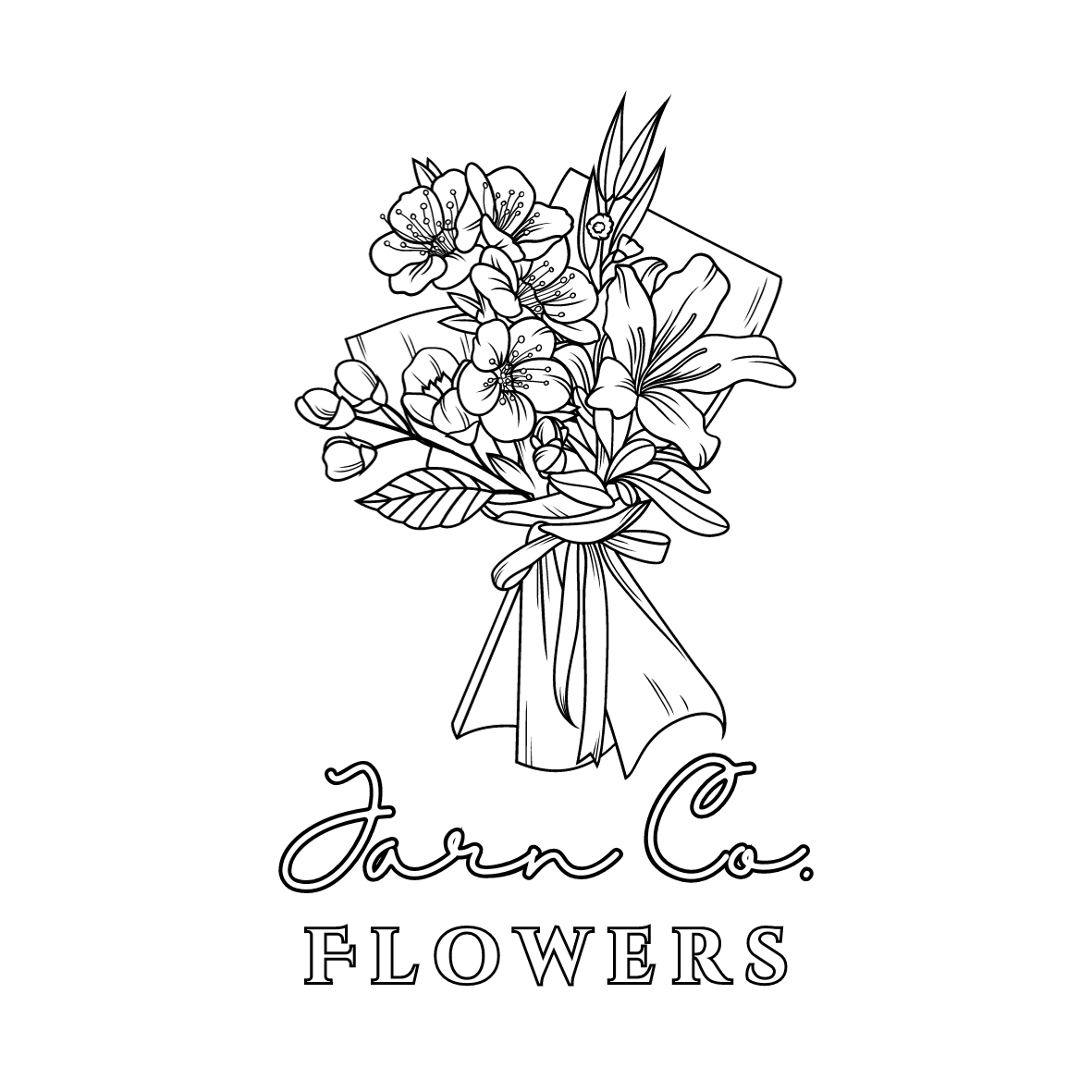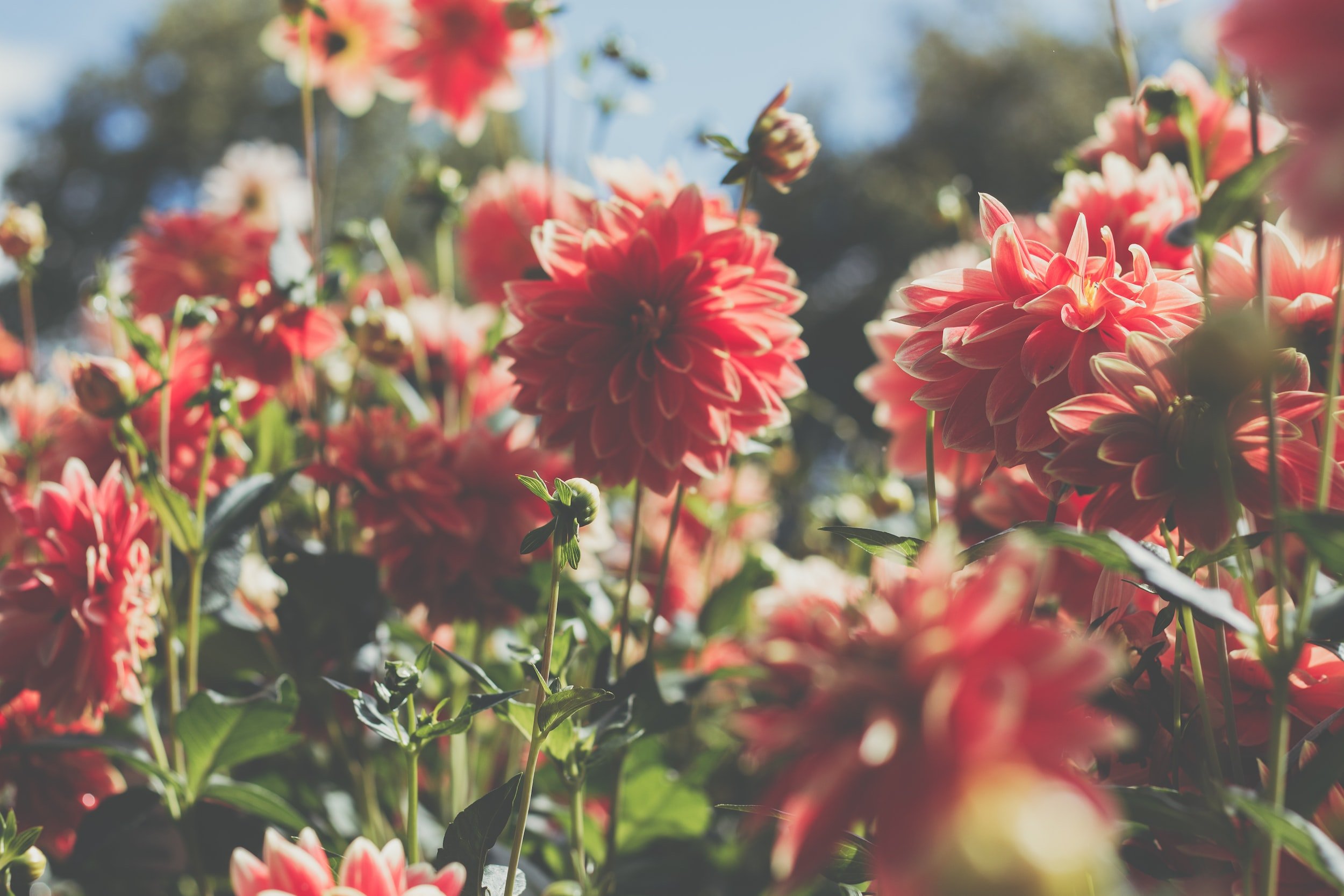Which Dahlias Should You Grow?
If you’re on the hunt for new dahlia varieties, Fall and Winter are the seasons to shop for tubers. Dahlias have made a comeback and let me tell you, dahlia fever is real. The demand for both tubers and cut flowers is high and I totally understand why. Dahlias are available in so many beautiful varieties and their cut and come again nature makes them very profitable. These great qualities can make selecting which dahlias to plant very overwhelming and expensive (tubers are not cheap). On top of that, with the thousands of varieties available, it’s impossible to grow every single one. Through my experience of growing and arranging with dahlias, I came up with a questionnaire that I use to evaluate every variety before I click that ‘Add to Cart’ button. Depending on what you are growing for, my criteria may or may not apply, but as a market and wholesale grower, these are the questions I seek answers to before I purchase any dahlia tuber.
1) Will it sell? / What is the demand for it?
Because I am in the business of selling cut flowers, I have to think about business first. If it won’t sell in any of my sales channels, it will only go in the compost and I hate being wasteful, so it must sell. There are two questions here because many times a particular variety may not have high demand so it’s the color that I’m considering first. For example, Rock Run Ashley is a very high demand variety. Sebastian, on the other hand, is not as high in demand, but its pinky-coral color is a favorite among market customers so I know it will sell.
2) How productive is the plant?
Even though a variety will sell, I need to consider its productivity because I need a large volume of dahlias. I like varieties that are prolific bloomers. I want to be able to harvest a variety every time it’s harvest day. I also like productive plants because that means I can recoup my investment on tubers and other expenses faster.
Intrigue, one of my top ten favorite dahlias, is a very productive plant and customers love it.
3) How hardy is the variety?
Because I sell at market and wholesale, I need dahlias that can hold up in transport and all kinds of weather. This criterion alone, for me, usually eliminates a good number of dahlias from being considered. Although I have a few in my patch, I don’t really bother to look at cactus, anemone, collarette, and dinnerplate dahlias anymore. I tend to stick to ball or formal decorative varieties.
Dinnerplate dahlias are definitely a showstopper, but their vase life is rather short.
4) How tall does the plant get?
I will make an exception on this one if the plant is productive or if it sells well, but plant height is a factor of consideration because of labor. I don’t like low growing or super tall plants. Low growing plants means more effort/labor to harvest. Meanwhile, super tall plants mean more effort/labor to stake the plants. If you’re growing in small quantities this may not matter as much, but when you’re growing a large volume, labor is definitely something to factor in. If one variety is demanding a lot of labor, it may be costing you to grow it.
Very tall cultivars are great for long stems, but there is extra work involved to make sure they are secure in the field.
5) Do I already have a variety that is similar?
If you already have something that’s similar and already works for you, don’t add on to your workload. If you sell to florists or do a lot of wedding work, it’s easy to fall into this trap because there are a gazillion peach, blush, coral, and white dahlias available. It will take some trial and error to figure out what varieties work for you, but once you do, stick to those tried and true. Unless you’re like me, where you want to grow several different varieties simply because you like growing dahlias (hahaha~).
6) When does it bloom?
This is a newly added criterion and here’s why. I have an early blooming burgundy variety (it might be Black Satin, I’m not 100% sure yet) that did not sell at all in July and most of August. Now that it’s officially Fall, it’s been selling like crazy. Of course, as the product is starting to move, the plant is starting to slow down. Now, I’m left wishing I had something similar as a backup. So, learn from my mistake; consider bloom time, folks!
I know my personal criteria is very cut flowers oriented, but no worries. For those of you that are not cut flower growers and simply want to grow dahlias in the landscape or your garden, I came up with criteria for you, too.
1) Where are you planting?
Planting location matters because some dahlias work better in certain areas or conditions than others. Are you planting along a walkway? Border dahlias such as Gallery Leonardo (or anything in the Gallery series, really) would look great along a walkway. Are you planting them along a fence in your garden? Tall growing dahlias like dinnerplates would look beautiful along a fence. Are you planting them in a container? Anemone dahlias grow well in containers. As you can see, depending on where you are planting your dahlias, certain varieties are better suited than others.
Anemone dahlias
They don’t always make a great cut flower, but they grow great in containers.
2) When does it bloom?
Early blooming dahlias are favored in landscapes or gardens because you want that gorgeous flush of color as early in the season as possible. However, I recommend tucking a few mid and late season bloomers in the garden as well. Some early blooming varieties start to fizzle out before the end of the season. Having those later blooming varieties can ensure that you have dahlias in your garden all season long.
3) How tall does the plant get?
As I mentioned before, very tall dahlia varieties require the extra work of staking. If you want to cut out or minimize the extra labor of staking, try to stick to lower growing varieties such as Crichton Honey (also great as a cut flower).
Dahlia ‘Crichton Honey’ is great in the landscape and as a cut flower.
4) How productive is the plant?
Certain varieties of dahlias bloom in a flush and then fizzle out. To keep your garden thriving all season long, select varieties that produce continuously.
A word about sourcing tubers…
Due to its high demand, there are an increasing number of dahlia tuber sellers every year. Some are great and I hate to say it, but most are not. Please do the due diligence of research and make sure you are purchasing from a viable source. I recommend buying from your local sources first before buying from outside your state. The majority of my tuber purchases come from farms here in Washington state. I am grateful that there are several dahlia growers here so buying local is not a huge issue for me. One of my favorite sources is Triple Wren Farms. I especially like buying the dahlias they have as a part of their Legacy collection. Those particular dahlias were hybridized by growers in Washington and they receive royalties every time a tuber is purchased. I think this is great because hybridizing is hard work. These talented hybridizers deserve compensation for bringing new beauties into the world.
If you can’t source dahlia tubers locally or you want to buy online, Swan Island Dahlias out of Oregon is another great reliable source.
Whether you’re a market grower like me or an avid gardener, I hope you found this post helpful.
Thanks for reading!
With gratitude,
Tracy








